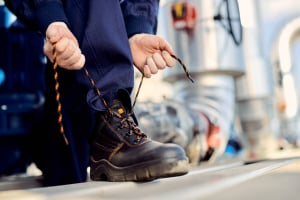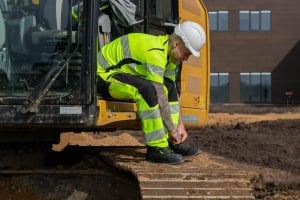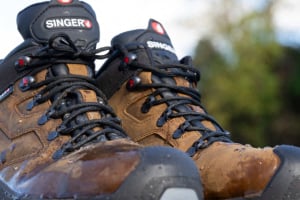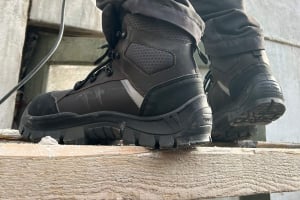Safety in the workplace is paramount, and wear safety shoes is often a non-negotiable requirement in many industries. However, while they protect your feet from external risks, these same shoes can sometimes cause pain, particularly in the heel area. If you regularly experience pain after a long day at work, you're not alone. Fortunately, understanding the cause of this pain and adopting appropriate strategies can greatly improve your daily comfort.
Summary
Understanding heel pain
Heel pain can occur for a variety of reasons, but to grasp the solutions, it is essential to understand the basics. The human foot is a complex structure made up of 26 bones, more than 30 joints and a multitude of muscles, tendons and ligaments. This complexity allows a wide variety of movements while supporting the weight of the body. Heel pain, often the result of overuse or improper weight distribution, can arise from conditions such as plantar fasciitis or heel spurs. These conditions are common in people who spend a lot of time on their feet, especially with shoes that do not adequately support the foot.
Why safety shoes can cause heel pain
Safety shoes are designed to provide maximum protection against various dangers. However, this protection can sometimes compromise comfort, particularly in terms of flexibility and heel support. A poor fit can put uneven pressure on the foot, while lack of cushioning can increase the impact on the heel with each step. It is therefore crucial to choose safety shoes that not only protect but also support your feet adequately.
Heel pain prevention
Choosing the right safety shoes
When selecting safety shoes, look for features like as arch support, good cushioning and a customizable fit. Take the time to compare different models and sizes to find the ones that will best suit your needs. Well-fitting shoes distribute weight evenly and reduce pressure on the heel. In addition, if your means allow it, it is preferable to invest in a pair of quality and recognized safety shoes which will on the one hand wear out much less quickly, and on the other hand will provide you with all the comfort necessary while preserving your feet.
Preventive practices at work
In addition to choosing the right shoes, incorporating stretching exercises for your feet and ankles into your daily routine can help prevent heel pain. Regular breaks to walk or change position can also relieve pressure on your heels. If possible, use anti-fatigue mats on hard work surfaces to reduce the impact on your feet.
Heel Pain Solutions
Having discussed the causes and prevention strategies, let's now see what solutions can relieve those who already suffer from heel pain.
Immediate solutions
When pain occurs, a few immediate solutions can help reduce discomfort:
- Ice application: Use an ice pack wrapped in a cloth and apply it to the heel for 15 to 20 minutes several times a day to reduce inflammation.
- Rest: Limit activities that aggravate heel pain, especially those that involve long periods of standing or walking.
- Anti-inflammatories: Nonsteroidal anti-inflammatory drugs (NSAIDs) can help reduce pain and inflammation. Always consult a healthcare professional before starting any drug treatment.
Long-term treatments
For those dealing with chronic heel pain, long-term solutions may be necessary:
- Custom-made foot orthotics: Orthopedic insoles, prescribed and made to measure, can correct foot imbalances and evenly distribute weight, thus relieving pressure on the heel.
- Physical Therapies: A physical therapist can suggest specific exercises to strengthen the muscles of the foot and ankle, improving stability and reducing pain.
- Consultation with a specialist: In some cases, it may be necessary to consult a podiatrist or orthopedist, who may recommend other treatments, such as corticosteroid injections or, in extreme cases, surgical intervention.
Maintenance and replacement of safety shoes
To maximize comfort and protection, timely maintenance and replacement of your safety footwear is crucial.
Importance of regular maintenance
Taking care of your safety shoes can extend their lifespan and maintain their performance.Clean them regularly to remove dirt and debrisand check the condition of the soles and support material. The use of specific maintenance products can also contribute to the longevity of materials.
Know when to replace your shoes
Even with the best maintenance, all safety shoes will eventually reach the end of their useful life. Signs like excessive sole wear, sole separation, or a noticeable decrease in comfort and support are clear indicators that it's time to look for a new pair. Don't ignore these signs, as wearing worn shoes can increase your risk of pain and injury.
Suffering from heel pain due to unsuitable safety shoes is not inevitable. By choosing your shoes correctly, adopting preventive practices and knowing the solutions in case of pain, you can considerably improve your comfort at work. Also remember the importance of maintenance and know when to replace your shoes to continue to benefit from optimal protection without compromising







